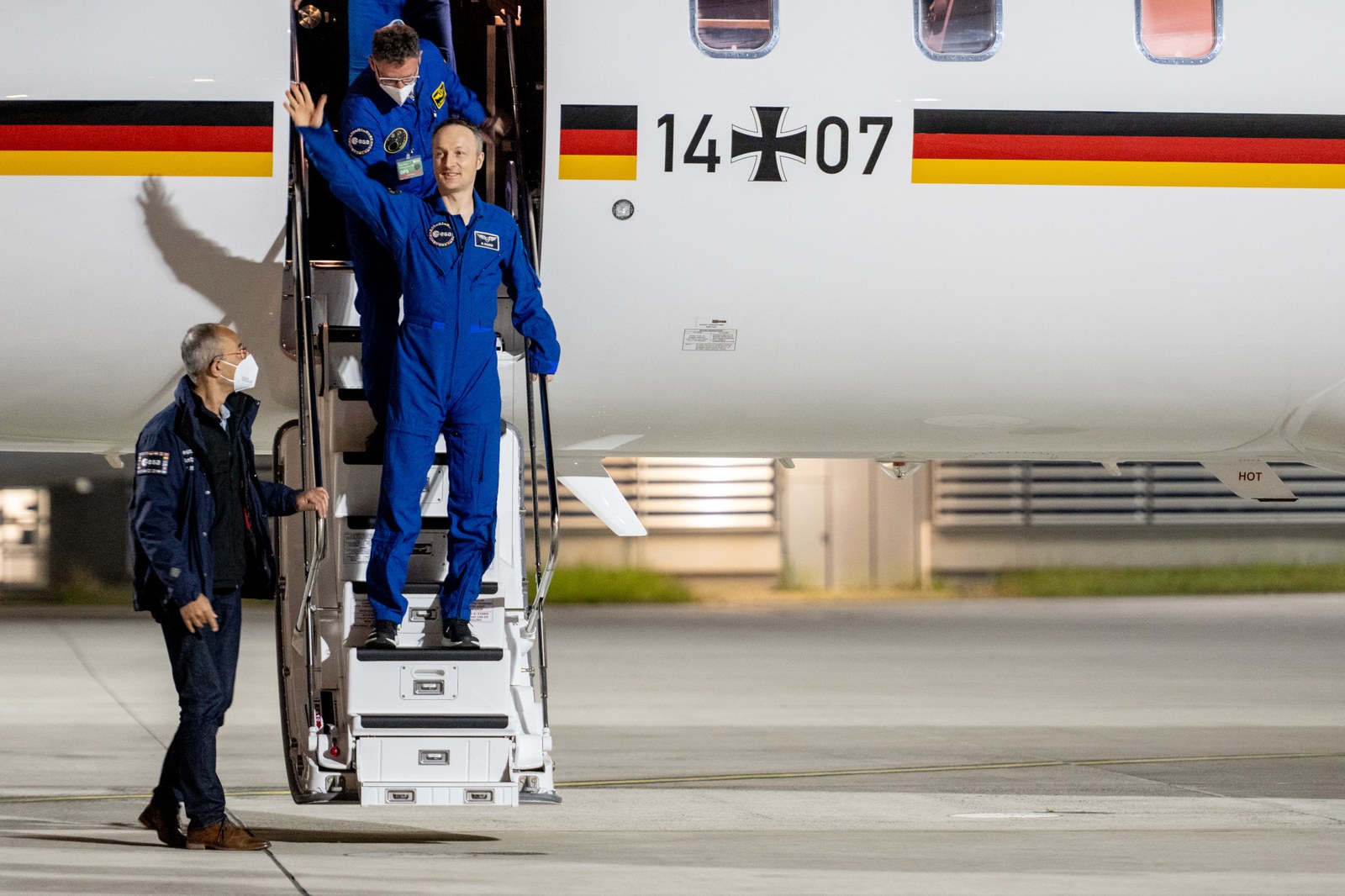From the ISS to :envihab in Cologne



- At DLR's aerospace medicine research centre, Matthias Maurer is getting used to Earth's gravity again.
- Tests study the effects of space conditions on humans and possible countermeasures.
- Research findings are shared with international space partners.
- Focus: Space, medicine, materials research, Cosmic Kiss
After splashing down on Earth off the coast of Florida, German ESA astronaut Matthias Maurer travelled directly to Cologne to continue with the experiments of his Cosmic Kiss mission and recover from his stay in space. He was driven from Cologne/Bonn Airport to the nearby :envihab facility at the German Aerospace Center (Deutsches Zentrum für Luft- und Raumfahrt; DLR) Institute of Aerospace Medicine. There, he will be looked after by a team from DLR and the European Astronaut Centre (EAC).
"Maurer will undergo a series of medical tests during his 'direct return'. Most of these were also performed before his stay on the International Space Station ISS, as part of either routine examinations or research projects. They generate a wide range of medical and psychological data," says Jens Jordan, Head of the DLR Institute of Aerospace Medicine in Cologne. The data is required by ESA and its international partners, such as NASA, the Canadian Space Agency (CSA) and DLR. Maurer will complete the examinations at :envihab and the EAC over the next two weeks. Further tests will then take place at the Johnson Space Center in Houston, Texas.
Focus on balance, fitness and performance
"Examinations will be repeated and compared with the previous results. One area of focus is sensorimotor measurements, which we use, for instance, to investigate the effects of spaceflight on the body's sense of balance. Physical fitness is determined using muscle strength and bicycle ergometry, so that we can check the effectiveness of the current training programme on the space station," explains Edwin Mulder, DLR Project Manager for the scientific tests carried out as part of Matthias Maurer's direct return. Sleep and cognitive performance are also evaluated in detail. Other scientific studies investigate phenomena such as the ageing of blood vessels, regulation of the heat balance of the body, the effect of space conditions on the brain and the impact of space radiation on humans.

Three experiments by the Institute of Aerospace Medicine
While on the ISS, Matthias Maurer conducted three experiments developed by the Institute of Aerospace Medicine. For the Retinal Diagnostics technology experiment, he used a small, lightweight lens connected to a tablet to study the effects of microgravity on eye health. "Around two-thirds of astronauts experience changes to their eyes. This is referred to as Spaceflight-Associated Neuro-ocular Syndrome (SANS), and it is a major medical risk on long space missions," says Claudia Stern, an ophthalmologist and Head of the Clinical Aerospace Medicine Department. The Retinal Diagnostics experiment lays the foundations for early diagnosis and the targeted use of countermeasures, which are being developed at :envihab in cooperation with DLR and NASA.
For the DOSIS 3D MINI experiment, Maurer installed sensors at 10 different locations on the ISS, with the aim of accurately recording radiation exposure. The goal of this long-term experiment is to determine the radiation distribution in the Columbus module as a function of the altitude of the ISS and solar activity.
Maurer also carried out the Touching Surfaces experiment to investigate novel surfaces for antimicrobial effectiveness under space conditions. This is because long-term stays by astronauts on a space station lead to microflora developing from the microorganisms they have brought with them. These can affect the health of people on board and damage materials, for example when a biofilm forms. Maurer regularly touched various surfaces with his fingers in order to investigate the adhesion of microorganisms to different engineering materials and surface textures.
Direct return:
The practice of caring for European astronauts in Cologne immediately after their return to Earth is still relatively new. In November 2014, Alexander Gerst was the first ESA astronaut to return directly to Cologne after his mission. Up until then, all Western European astronauts had been assessed by NASA in the USA or Russia. Medical data is collected according to identical standards worldwide to ensure comparability. The goal is to obtain better information about the effects of microgravity on the human body. Using the resulting data, countermeasures to mitigate the negative effects of microgravity can be developed.
The highly specialised medical and research team will provide Mattias Maurer with round-the-clock care over the next two weeks and carry out tests on behalf of ESA, NASA and other space agencies. Maurer's direct return marks the eighth stay by European astronauts at :envihab. Before him, the French astronaut Thomas Pesquet (2021 and 2017), the Italian Luca Parmitano (2020), the German Alexander Gerst (2018 and 2014), Britain's Timothy Peake (2016) and the Dane Andreas Mogensen (2015) came here to readjust to conditions on Earth.
